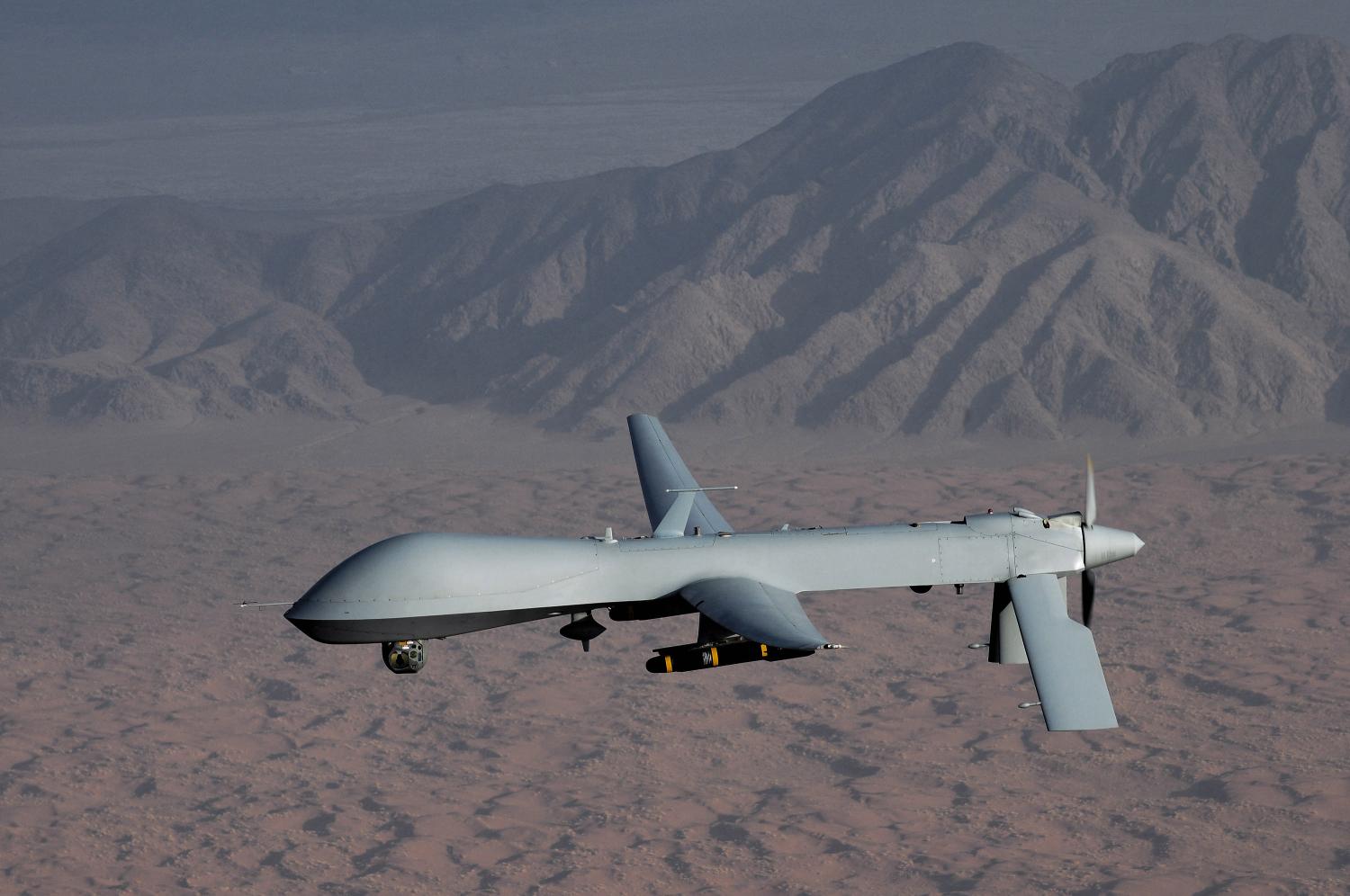The Obama administration has an opportunity — perhaps an obligation — to outline a doctrine that lays out criteria by which the United States will develop, deploy and use tactics such as drones and cyber attacks. Peter W. Singer and Thomas Wright wrote this memorandum to President Obama as part of
Big Bets and Black Swans: A Presidential Briefing Book
.
- What are the key strategic goals and ethics that should drive development of drones and cyber systems?
- When is authorization required for the operational deployment of such technologies versus notification?
- How does the United States ensure that technologies that limit physical risk to the operator do not numb us to the political consequences of their use?
Download Memorandum (pdf) | Download the Presidential Briefing Book (pdf)
TO: President Obama
FROM: Peter W. Singer and Thomas Wright
Over the past four years, your administration worked hard to rollback one of the signature weapons of the 20th century, the nuclear bomb, which was one of the reasons why you were awarded the Nobel Peace Prize. Yet during this same period, the United States broke new ground in the use of new and revolutionary military technologies that may well become signature weapons of the 21st century.
There has been a game change in weaponry over the last several years, with a new generation of advanced technology that moves the point of critical human decision, both geographically off the battlefield and also, increasingly, chronologically away from the time of kinetic action. These encompass both physical systems, like unmanned aircraft (a.k.a. “drones”), and a new class of virtual weaponry, malware that can conduct a cyber attack with real world consequences.
The United States has been a leader in driving this revolution. Its military unmanned systems now number more than 8,000 in the air and 12,000 on the ground and are used daily in Afghanistan. The U.S. Cyber Command became operational in 2010 and military spending on cyber operations now measures in the billions of dollars.
At the same time, civilian intelligence agencies are increasingly using these technologies in a series of not-so-covert operations and so-called “secret wars” that have leaked into the press. There have been over 400 drone strikes into places like Pakistan and Yemen. The United States also deployed Stuxnet to sabotage Iranian nuclear development, the world’s first known use of a specially designed cyber weapon.
Such weapons seem advanced, but represent just the beginning. Technologies currently under development are far more effective and more autonomous, and capable of operating in a wider set of circumstances. We are at the onset of a decades-long technological revolution in warfare, comparable to the introduction of mechanization and airpower onto the battlefield or the advent of the atomic bomb.
Recommendation:
You now have an opportunity — and perhaps an obligation — to outline a doctrine that lays out criteria by which the United States will develop, deploy and use these weapons. The goal should be to establish a framework for how the United States believes the evolution of these revolutionary new technologies should proceed. The effort to set the terms of the future debate and create a doctrine for guidance should draw upon past lessons from comparable situations and culminate in a major presidential speech.
Background:
These new weapons have become a hallmark of this administration’s foreign policy for good reason. They offered new options for action that have proven more accurate and proportionate, and less risky than previously-available alternatives. They have repeatedly been used in successful operations that have saved soldiers’ lives, eliminated key terrorist leaders, and offered a much-sought-after third way to deal with Iran’s nuclear program.
However, the situation surrounding these once science-fiction, then highly covert weapons has changed. First, there has been a global proliferation. The United States is leading the way, but many follow. At the end of 2012, 76 other countries have military robotics programs and over 100 have cyberwar capabilities.
Second, the international discourse and debate over them has risen significantly, increasing external pressure on U.S. policy interests. These range from international controversy over the drone strike campaign and the appointment of a U.N. special rapporteur to new NGO campaigns to preemptively ban the next generation of technologies under development.
Finally, after years of silence, the U.S. government has started to make efforts to establish policies and engage in the growing debate. These range from speeches by your aides finally acknowledging the use of such technologies in a counter-terrorism context to lesser noticed workinglevel documents, such as an attempt to establish the policy for the next, far more autonomous generation. These have been very good starts but they have been disjointed and preliminary. Most importantly, they are missing the stamp of your voice and authority, which is essential to turn tentative first steps into established goals and policy. Much remains to be done, and, more importantly, said out in the open.
What Would the Big Bet Entail?
Armed with a new revolutionary weapon in the 1940s and 1950s, the Truman and Eisenhower administrations engaged in a series of comprehensive reviews to understand better the technology, its best doctrine of use, and likely impact on geopolitics and the direction of U.S. foreign policy. These doctrines were not binding for all time. Nor did they solve all the problems of the nuclear age. But, the efforts proved valuable. Setting nuclear doctrine in public molded the strategic environment for the better, not just against adversaries, but also in relationships with allies. The discussions also helped set the terms of the discussion both internationally and domestically, helping to introduce Congress and the American public to a world of powerful new technology and important new responsibilities.
Today, the United States should embark upon a similar effort around the new generation of weaponry. This endeavor should answer where it stands on the key questions emerging now and soon to become central, including:
• What are the key strategic goals and ethical guidelines that should drive development of these new technologies? Are there any limitations that should be established or areas of the technology that should be preemptively banned?
• Is current international law sufficient to cover the development and use of these new technologies, or are there emerging gaps that should be filled?
• What is the dividing line between the military vs. civilian intelligence agency use of such technologies? What distinguishes a covert action using these technologies from an act of war?
• What is the proper role for Congress vs. the Executive Branch? When is authorization required for the operational deployment of such technologies versus notification? Does the War Powers Resolution apply even in situations where no U.S. personnel are in harm’s way?
• Are there any key criteria for how the U.S. will similarly evaluate other nations’ use of the technology, including by potential adversaries?
• How does the United States plan to coordinate development and use doctrines with major U.S. allies?
• How does the United States ensure that technologies that limit physical risk to the operator do not numb us to the political consequences of their use?
There is a need to be realistic about what is possible. Much as with the early doctrines on nuclear weapons, the answers to these questions will not be set in stone. Rather, the goal is to set out a presidential level vision that will fill today’s gaps in the discourse and guide tomorrow’s policy.
Accessing the Downside:
There is a counterargument that it is better to say nothing, for fear of tipping off rivals, unilaterally tying U.S. hands, or that no initiative will work unless all other countries sign on, which they won’t.
That is a mistake. The less you say, the more that vacuum will be filled by others, in harmful ways. Having already used the technologies, but without proper elucidation, the precedents the United States sets may be exploited. Other states and non-state actors will use these technologies in far more crude and non-discriminatory ways, but claim to be merely following in U.S. footsteps. Finally, the debate will not stop simply because the United States is not part of it. International organizations will push ahead with investigations and propose new treaties, which, while likely ineffective, will nevertheless isolate the United States and drain our soft power. And on the home front, the original foundations of congressional and public support for many of the covert uses of these technologies could erode as the United States moves further away from 9/11. Indeed, the administration recently won a court case to maintain the veil of semi-silence that surrounds the drone strike program, but the judge described continuing the policy of denial as having an “Alice in Wonderland” feel.
Conclusion:
Beginning this discussion is a modest step with no budget costs, but entails a big bet with enormous advantages over the alternative of remaining silent. You would lay out your vision, helping both to guide internal policy development across multiple agencies as well as assuage genuine concerns at home and abroad. Most importantly, the voice of a respected commander in chief, with a strong expertise in the law, would create the foundations of an international norm, allowing the United States to build a large coalition of the like-minded on these issues, making it easier to identify and isolate those who depart from this norm. It will help maintain U.S. influence over the future of these technologies, even as they proliferate and evolve beyond our control.
By speaking out now, you will not just set the terms of the debate but steer it towards more positive ends. It’s the kind of effort for which leaders win Nobel Peace Prizes, again.
The Brookings Institution is committed to quality, independence, and impact.
We are supported by a diverse array of funders. In line with our values and policies, each Brookings publication represents the sole views of its author(s).





